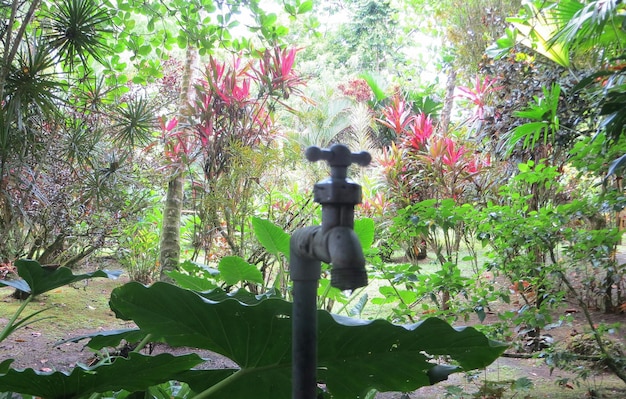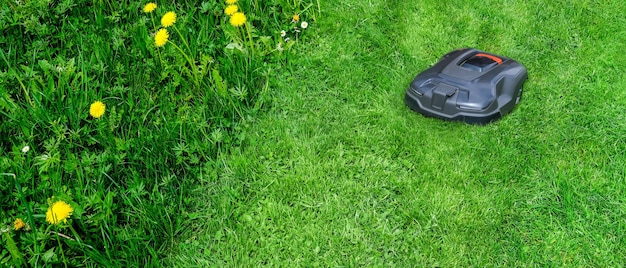Smart Gardening: Automated Tools for a Thriving US Backyard

Smart gardening leverages automated tools like smart sprinklers, weather sensors, and robotic lawnmowers to optimize plant health, conserve resources, and reduce manual labor in US backyards.
Transform your US backyard into a thriving oasis with smart gardening. Discover how automated tools can simplify gardening, conserve resources, and maximize your yield with minimal effort.
What is Smart Gardening?
Smart gardening uses technology and automation to optimize the gardening process. It involves integrating devices and systems that monitor environmental conditions, automate tasks, and provide valuable insights for better plant care.
By embracing smart gardening, US gardeners can achieve greater efficiency, reduce waste, and enjoy healthier, more productive gardens with significantly less manual labor.
Key Components of Smart Gardening
Smart gardening relies on several key components working together to create an automated and efficient system:
- Smart Sensors: These devices measure soil moisture, temperature, sunlight, and other environmental factors, providing real-time data for informed decision-making.
- Automated Irrigation Systems: Smart sprinklers and drip irrigation systems deliver precise amounts of water to plants based on their specific needs and weather conditions.
- Robotic Lawn Mowers: These devices autonomously maintain lawns, cutting grass at regular intervals to promote healthy growth.
- Control Hubs and Mobile Apps: These platforms allow gardeners to monitor and control their smart gardening systems remotely, adjusting settings and receiving alerts as needed.
With these components, smart gardening can transform your backyard into a sustainable and thriving oasis.
Choosing the Right Smart Sprinkler System
Selecting the right smart sprinkler system is essential for efficient and effective irrigation. Factors to consider include the size of your garden, the types of plants you grow, and your local climate.
A well-chosen smart sprinkler system can significantly reduce water waste and promote healthier plant growth by delivering water only when and where it’s needed.

Types of Smart Sprinkler Systems
There are two main types of smart sprinkler systems available for US gardeners:
- Weather-Based Systems: These systems use local weather data to adjust watering schedules automatically, reducing water waste during rainy periods.
- Soil Moisture-Based Systems: These systems use sensors to measure soil moisture levels, delivering water only when the soil is dry.
Both types of smart sprinkler systems offer significant benefits, but soil moisture-based systems may provide more precise watering based on the specific needs of your garden.
Choosing a smart sprinkler system tailored to your garden’s needs is a crucial step towards efficient water use.
Optimizing Plant Health with Smart Sensors
Smart sensors play a vital role in maintaining optimal plant health by providing real-time data on environmental conditions. These sensors can measure soil moisture, temperature, sunlight, and other factors, allowing gardeners to make informed decisions about plant care.
By monitoring these conditions, US gardeners can identify potential problems early and take corrective action to prevent plant stress and disease.
Benefits of Using Smart Sensors
The benefits of using smart sensors in your garden are numerous:
- Early Problem Detection: Sensors can detect changes in soil moisture or temperature that may indicate a problem, allowing you to address it before it becomes serious.
- Precise Watering: By monitoring soil moisture levels, sensors can help you determine when and how much to water your plants, preventing overwatering or underwatering.
- Optimized Fertilization: Sensors can measure nutrient levels in the soil, allowing you to adjust your fertilization schedule for optimal plant growth.
Investing in smart sensors is a proactive approach to ensuring the health and vitality of your garden.
Automated Lawn Care with Robotic Mowers
Robotic lawn mowers offer a convenient and efficient way to maintain your lawn. These devices autonomously cut grass at regular intervals, promoting healthy growth and reducing the need for manual mowing.
For US homeowners, robotic mowers can free up valuable time and energy while ensuring a consistently well-manicured lawn.

Features to Look for in a Robotic Mower
When choosing a robotic lawn mower, consider the following features:
- Cutting Height Adjustment: Look for a mower that allows you to adjust the cutting height to suit your lawn’s needs.
- Obstacle Avoidance: Choose a mower with sensors that can detect and avoid obstacles like trees, flowerbeds, and garden furniture.
- Rain Sensors: Opt for a mower with rain sensors that will automatically pause mowing during wet weather to prevent damage to your lawn.
Selecting a robotic mower with the right features can make lawn care a breeze.
Integrating Weather Data for Smart Gardening
Integrating weather data into your smart gardening system is essential for making informed decisions about irrigation and plant care. By monitoring weather forecasts and historical data, you can anticipate changes in temperature, rainfall, and sunlight, and adjust your gardening practices accordingly.
For US gardeners, this means being able to prepare for heatwaves, droughts, or unexpected frosts, ensuring the survival and health of your plants.
How to Use Weather Data in Your Garden
Here are some ways to integrate weather data into your smart gardening system:
- Use a Smart Sprinkler Controller: These devices can automatically adjust watering schedules based on local weather data.
- Monitor Weather Forecasts: Pay attention to weather forecasts to anticipate changes in temperature and rainfall, and adjust your gardening practices accordingly.
- Use a Weather Station: Consider installing a weather station in your garden to collect real-time data on temperature, rainfall, and sunlight.
By using weather data effectively, you can optimize your gardening practices and protect your plants from the elements.
Troubleshooting Common Smart Gardening Issues
While smart gardening offers many benefits, it’s not without its challenges. Common issues include sensor malfunctions, connectivity problems, and software glitches.
By understanding these potential problems and knowing how to troubleshoot them, US gardeners can minimize downtime and keep their smart gardening systems running smoothly.
Tips for Troubleshooting Smart Gardening Issues
Here are some tips for troubleshooting common smart gardening issues:
- Check Connections: Make sure all sensors and devices are properly connected and that there are no loose wires or damaged cables.
- Update Software: Keep your smart gardening software up to date to ensure compatibility with the latest devices and features.
- Calibrate Sensors: Calibrate your sensors regularly to ensure accurate readings.
By following these tips, you can troubleshoot most common smart gardening issues and keep your system running smoothly.
| Key Point | Brief Description |
|---|---|
| 🌱 Smart Sprinklers | Water plants efficiently based on weather data and soil moisture levels. |
| 🌡️ Smart Sensors | Monitor soil moisture, temperature, and sunlight for optimal plant health. |
| 🤖 Robotic Mowers | Automate lawn care for a consistently well-manicured lawn. |
| 🌦️ Weather Data | Integrate weather forecasts for informed irrigation and plant care decisions. |
Frequently Asked Questions About Smart Gardening
Smart gardening can reduce water waste, promote healthier plant growth, save time on manual labor, and provide real-time insights into your garden’s needs.
Smart sprinkler systems use weather data or soil moisture sensors to adjust watering schedules, delivering water only when and where it’s needed.
Yes, most robotic lawn mowers come with safety features like obstacle avoidance and blade shut-off mechanisms to prevent accidents.
No, most smart gardening devices are designed for easy setup and use, with intuitive interfaces and mobile apps that guide you through the process.
The cost of setting up a smart garden varies depending on the size of your garden and the types of devices you choose, but it’s an investment that can pay off in the long run through reduced water bills and healthier plants.
Conclusion
Embracing smart gardening practices can revolutionize your US backyard, making it more sustainable, efficient, and enjoyable. By leveraging automated tools and data-driven insights, you can create a thriving garden that requires less manual labor and conserves valuable resources.





